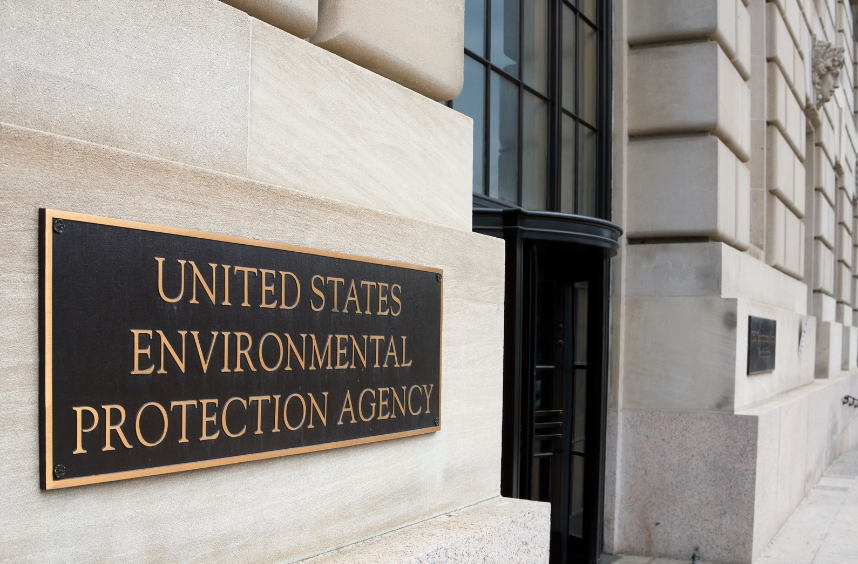Underscores Need for Further Action to Restrict Use of PFAS Chemicals
Montpelier – Today, the federal Environmental Protection Agency proposed its first national drinking water standards for six of the thousands of PFAS chemicals. The proposal would regulate two of these harmful chemicals, PFOA and PFOS, at 4 parts per trillion (ppt), and it also sets a hazard-based standard for a mix of four other PFAS chemicals – PFNA, PFHxS, PFBS and GenX.
This rule is now open for public comment before being finalized later this year. Once this rule is adopted, water systems would have to monitor for these six specific PFAS chemicals. If they are detected, the public would need to be notified and work would be required to clean up the contaminated water.
Vermont already has drinking water standards in place for five PFAS chemicals, at a combined limit of 20 parts per trillion. These new federal standards, if adopted, would be more health protective than the current Vermont regulations.
Jon Groveman, Policy and Water Program Director for the Vermont Natural Resources Council said, ”VNRC is grateful that EPA has taken this long overdue step to propose drinking water standards for certain PFAS chemicals. It is vital that EPA follow through by adopting their proposal into law and it will be crucial for the State of Vermont to update its regulations to follow EPA’s lead and protect the health of Vermonters from drinking water contaminated with PFAS chemicals.” Groveman added, “While EPA’s proposal is a major step forward, the proposal only addresses six out of the thousands of PFAS chemicals that pose serious health risks. EPA and the state of Vermont need to take steps to address the entire class of PFAS chemicals.”
PFAS are manmade chemicals – dubbed “forever chemicals” because of their persistence in the environment – which can cause serious health problems like cancer, thyroid disease, obesity, decreased fertility, hormone suppression and liver damage, according to the EPA.
PFAS contamination was first discovered in Vermont drinking water in North Bennington in 2016, and since then, the state has taken numerous steps to test for and regulate these chemicals. The state began testing public drinking water supplies, and is now starting to test private drinking water wells. For example, the town of Hinesburg is now wrestling with how to address PFAS contamination in well water recently discovered downstream of a closed landfill.
Much more work needs to be done to understand the extent of PFAS contamination in Vermont’s environment and our bodies, and to protect Vermonters from these harmful chemicals.
To protect public health and the environment, Vermont has taken steps to stop importing more PFAS chemicals and PFAS-containing products to prevent exposure and environmental contamination. In 2021, Vermont enacted a ban on PFAS in food packaging, firefighting foam, ski wax, and carpets and rugs. This year, the Vermont legislature is considering important legislation (S.25) to ban PFAS from textiles, artificial turf, and personal care products like shampoos and lotions.
Lauren Hierl, Executive Director of Vermont Conservation Voters noted, “Every Vermonter deserves safe and clean drinking water, and we applaud the EPA for this long overdue but important proposal to regulate six harmful PFAS chemicals. At the same time, we must work to regulate the full class of PFAS chemicals, continue to work towards a goal of zero PFAS exposure, and hold toxic polluters accountable for the harm they cause.” Hierl added, “Further, we must turn off the tap of importing these dangerous chemicals into our state, and Vermont legislators should swiftly advance an important bill (S.25) to ban PFAS and other harmful contaminants in products like personal care products, textiles, and artificial turf.”
“The new EPA limits on PFAS toxins in drinking water are a welcome move, but this is in no way sufficient to protect public health from these manufactured poisons,” said Paul Burns, Executive Director of the Vermont Public Interest Research Group. “Among all states, Vermont has been at the forefront of identifying and addressing this toxic threat. This year, Vermont must continue to lead by passing S.25 and eliminating PFAS from personal care products, period products, textiles, and synthetic turf.”
Further, Vermont organizations called for chemical manufacturers and corporations using harmful chemicals to be held responsible for the harm they have caused. In 2022, Vermont enacted a law to make it easier for victims of toxic contamination caused by a toxic polluter to seek and gain access to medical monitoring for diseases linked to that chemical exposure. These organizations support additional steps to hold these companies accountable for the harm their products are causing.
###




